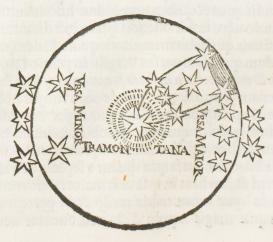A specific case of the diffusion of knowledge innovation is investigated, namely the cosmological conceptions of the intellectual circle in Padua evident in their production of commentaries on Sacrobosco’s De sphaera during the early modern period. In particular, the commentaries on the Sphere of Sacrobosco by two professors of astrology at the University of Padua from the fifteenth and the sixteenth centuries, Prosdocimo de’ Beldomandi (Super tractatu sphaerico commentaria, ca. 1418) and Bartolomeo Vespucci (Glossulae in plerisque locis sphaerae, ca. 1506), are taken into consideration. These two commentaries were conjointly published in the compendium of astronomical treatises edited by the astrologer Luca Gaurico and printed in Venice by Lucantonio Giunta in 1531.
The investigation focuses especially on the question related to the nature and structure of the cosmos expressed in the work of these two authors. For instance, the relation between the geometrical notion of sphere and the ontological conception of the cosmos was seen very differently by each of them: Vespucci was more inclined than Beldomandi to set forth the distinction between geometrical and physical spheres with respect to their ontological status, as well as to distinguish the approach of the geometer and of the astronomer (in their use of the geometrical notion of sphere). Even the order of planetary spheres was conceived of differently: while Beldomandi offered both physical and mathematical arguments in favor of the Ptolemaic ordering, and did not present any arguments in favor of the Platonic ordering, Vespucci dismissed both alternatives, denying the possibility of ever having a demonstrative argument in favor of either of them.
The research results will be published in the frame of the initiative Edition Open Sources.

